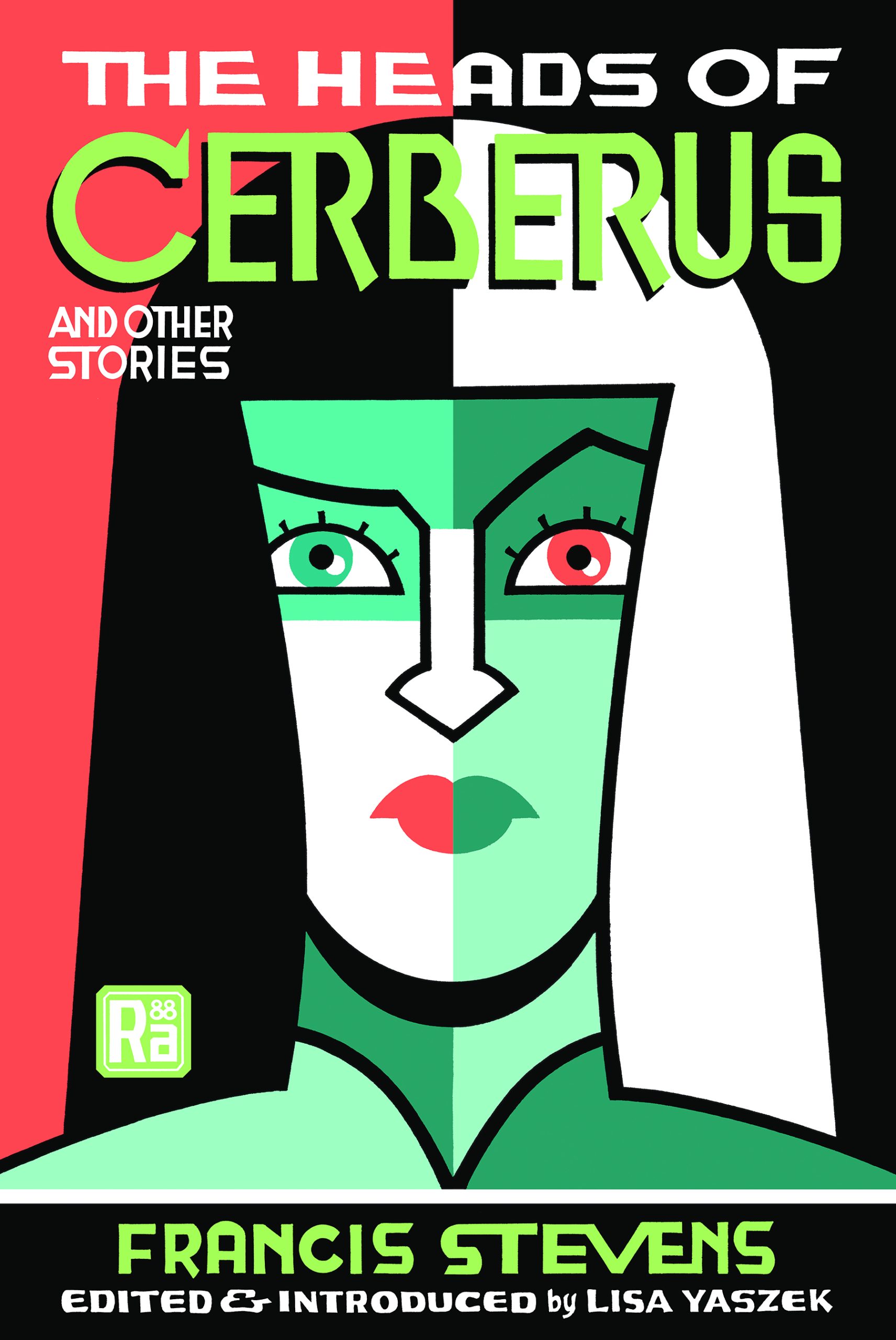THE HEADS OF CERBERUS
By:
September 17, 2024
Under the direction of HILOBROW’s Josh Glenn, the MIT Press’s RADIUM AGE series is reissuing notable proto-sf stories from the underappreciated era between 1900–1935.
In these forgotten classics, sf readers will discover the origins of enduring tropes like robots (berserk or benevolent), tyrannical supermen, dystopias and apocalypses, sinister telepaths, and eco-catastrophes.
With new contributions by historians, science journalists, and sf authors, the Radium Age book series will recontextualize the breakthroughs and biases of these proto-sf pioneers, and chart the emergence of a burgeoning literary genre.
Today marks the publication of the following Radium Age series title…
FRANCIS STEVENS
Edited & Introduced by LISA YASZEK
(September 17, 2024)

Exposed to a high-tech dust that can transport people from one dimension to another, three travelers must try to escape the totalitarian Philadelphia of 2118.
When three people in Philadelphia inhale dust developed by a scientist who has discovered parallel universes, they are transported into an interdimensional no-man’s land that is populated by supernatural beings. From there, they go on to an alternate-future version of Philadelphia — a frightening dystopian nation-state in which citizens are numbered, not named. How will they escape? In The Heads of Cerberus and Other Stories, introduced by Lisa Yaszek, you will find this world-bending story as well as five others written by Francis Stevens, the pseudonym of Gertrude Barrows Bennett, a pioneering science fiction and fantasy adventure writer from Minneapolis who made her literary debut at the precocious age of 17.
Often celebrated as “the woman who invented dark fantasy,” Bennett possessed incredible range; her groundbreaking stories — produced largely between 1904 and 1919 — suggest that she is better understood as the mother of modern genre fiction writ large. Bennett’s work has anticipated everything from the work of Philip K. Dick to Superman comics to The Hunger Games, making it as relevant now as it ever was.
“I am always delighted when I find Francis Stevens ‘booked for a thriller.’” — Reader’s letter to The Argosy (1919).
“What strikes us in [Stevens’s ‘Friend Island’] is the happy combination of an imagination that is projected into the distant future with a bubbling sense of humor that knows how to turn all the clichés of the hour into a rollicking good laugh. An unusual bit of work, which will be sure to delight all appraisers of the new and the delightful.” — All-Story Weekly (1918)
“‘Behind the Curtain,’ by Francis Stevens, is a lot better than Poe’s ‘The Cask of Amontillado,’ if we do say it.” — All-Story Weekly (1918)
Re The Heads of Cerberus: “A highly imaginative work, one of the classics of early pulp fantastic fiction” — E.F. Bleiler
Re The Heads of Cerberus: “Those who insist on the close reasoning and the satirical wit of modern science fiction will find surprising amounts of both here.” — Damon Knight, In Search of Wonder
Re The Heads of Cerberus: “Perhaps the first science fantasy to use the alternate time-track, or parallel worlds, idea.” — Groff Conklin
“The stories in this collection are richly evocative of their time’s vision for our possible future, and their influence on the genre continues to broadly underpin the language by which contemporary works now explore today’s futures.” — Suzanne Palmer
FRANCIS STEVENS (Gertrude Barrows Bennett, 1884–1948) was the first American woman to publish widely in fantasy and science fiction. Her five short stories and seven longer works of fiction, all of which appeared in pulp magazines such as Argosy, All-Story Weekly, and Weird Tales, would influence everyone from H.P Lovecraft to C.L. Moore.
LISA YASZEK is Regents’ Professor of Science Fiction Studies in the School of Literature, Media, and Communication at Georgia Tech. Her books include Sisters of Tomorrow: The First Women of Science Fiction (2016) and The Future is Female! series (2018–present). A past president of the Science Fiction Research Association, Yaszek serves as an editor for the Library of America.
Cover designed by Seth. See this book at The MIT Press.
RADIUM AGE PROTO-SF FROM THE MIT PRESS: VOICES FROM THE RADIUM AGE, ed. Joshua Glenn | J.D. Beresford’s A WORLD OF WOMEN | E.V. Odle’s THE CLOCKWORK MAN | H.G Wells’s THE WORLD SET FREE | Pauline Hopkins’s OF ONE BLOOD | J.J. Connington’s NORDENHOLT’S MILLION | Rose Macaulay’s WHAT NOT | Cicely Hamilton’s THEODORE SAVAGE | Arthur Conan Doyle’s THE LOST WORLD & THE POISON BELT | G.K. Chesterton’s THE NAPOLEON OF NOTTING HILL | MORE VOICES FROM THE RADIUM AGE, ed. Joshua Glenn | William Hope Hodgson’s THE NIGHT LAND | Hemendrakumar Roy’s THE INHUMANS | Charlotte Haldane’s MAN’S WORLD | Francis Stevens’s THE HEADS OF CERBERUS & OTHER STORIES | Edward Shanks’s THE PEOPLE OF THE RUINS | J.D. Beresford’s THE HAMPDENSHIRE WONDER | John Taine’s THE GREATEST ADVENTURE | Marietta Shaginyan’s YANKEES IN PETROGRAD | BEFORE SUPERMAN: SUPERHUMANS OF THE RADIUM AGE, ed. Joshua Glenn | E. and H. Heron’s FLAXMAN LOW: OCCULT DETECTIVE | Irene Clyde’s BEATRICE THE SIXTEENTH | & more to come.
RADIUM AGE PROTO-SF: “Radium Age” is Josh Glenn’s name for the nascent sf genre’s c. 1900–1935 era, a period which saw the discovery of radioactivity, i.e., the revelation that matter itself is constantly in movement — a fitting metaphor for the first decades of the 20th century, during which old scientific, religious, political, and social certainties were shattered. More info here.
